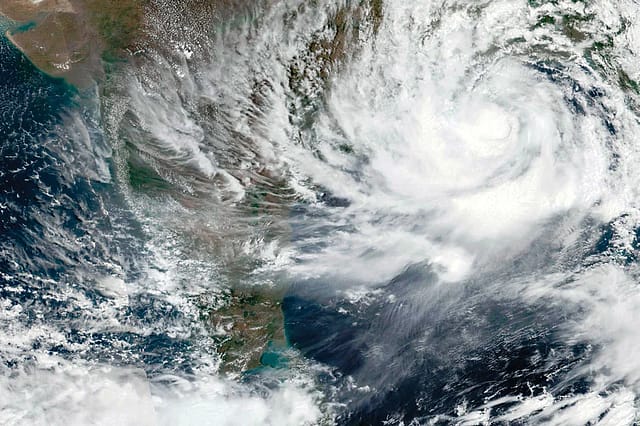The silent science powering disaster warnings

In 2005, shortly after completing my master’s degree in Physics, I joined the Centre for Earth Science Studies, Government of Kerala, Thiruvananthapuram, which was later upgraded to a national institute as the National Centre for Earth Science Studies (NCESS), where I was assigned with the responsibility of conducting numerical modelling studies for the coastal regions of Kollam and Alappuzha in southern Kerala, which were the worst-hit areas in the 2004 tsunami. At that time, I had little to no scientific understanding of numerical modelling. Gradually, I began learning the fundamental science behind these techniques. Today, numerical modelling has become a crucial tool in disaster management, preparedness, and early warning systems. Besides, it has made signatures in various other branches of science and arts too. The purpose of this article is to highlight the core concepts involved in this powerful scientific approach.
When nature turns turbulent, when oceans rise, or when the sky grows threatening with storms, every second becomes precious. The capacity to foresee such calamities before they strike can mean the difference between safety and catastrophe. Behind this life-saving ability lies one of the most remarkable achievements of modern science, namely numerical modelling.
Numerical modelling is the process of using mathematical equations to represent and simulate the behaviour of nature. Every element of the physical world, whether it is the movement of air in the atmosphere, the swirling of ocean currents, or the shifting of tectonic plates, follows precise physical laws. Scientists express these laws in mathematical form and feed them into high-performance computers called workstations along with real-time observational data. The computers then perform millions of calculations every second, reproducing how the natural world is likely to evolve in the coming hours or days. The result is a scientifically generated glimpse of the future as an easy reference material.
Bloodlust in Bangladesh
21 Nov 2025 - Vol 04 | Issue 48
Death sentence for Sheikh Hasina deepens Dhaka's existential crisis
This technique has become the backbone of modern weather and climate forecasting. Almost every weather prediction today—the arrival of the monsoon, the track of a cyclone, or the possibility of a heatwave—is based on the results of numerical weather prediction models. These models divide the Earth and its atmosphere into a vast three-dimensional grid and calculate temperature, humidity, wind, and pressure at each point. Supercomputers such as India’s “Mihir” and “Pratyush” process trillions of such calculations, running both global and regional models that have been developed by agencies like the India Meteorological Department, the European Centre for Medium-Range Weather Forecasts, and NASA. Through these efforts, the accuracy of cyclone forecasts and rainfall predictions has improved dramatically, allowing disaster management agencies to issue timely warnings and protect millions of lives.
The usefulness of numerical modelling, however, extends far beyond the daily weather report. It is an essential tool in understanding and preparing for a range of natural disasters. Models of the atmosphere and oceans help to anticipate the strength and direction of cyclones and the storm surges they produce along coastlines. Hydrological models, which simulate the movement of water through river systems, predict floods and guide reservoir management. Seismic and tsunami models study how shock waves and ocean displacements travel across the planet, enabling early warning systems to alert coastal populations. Long-term climate models evaluate rainfall patterns, soil moisture, and temperature trends to forecast droughts, while atmospheric chemistry models trace how pollutants or wildfire smoke spread under varying wind conditions. In every case, numerical modelling transforms raw data into meaningful insights that guide preparedness and policy decisions.
The true power of these models lies not merely in prediction but in preparation. When numerical forecasts indicate that a cyclone may make landfall along a vulnerable coast, the data is fed directly into the nation’s disaster management systems. Officials can then plan evacuations, identify safe zones, and pre-position relief materials and rescue teams. During Cyclone Fani in 2019, accurate numerical forecasts helped the government of Odisha evacuate more than a million people well before the storm struck, drastically reducing the loss of life. Similar achievements have been recorded during floods and heavy rainfall events, where model-based forecasts have guided emergency actions and protected infrastructure.
Yet, numerical modelling is not a simple or flawless process. It demands immense computational power, sophisticated observation networks, and expert interpretation. Even small inaccuracies in the initial data can lead to large deviations in the final forecast, a challenge often referred to as the “butterfly effect.” To overcome this, scientists continuously update their models using data from satellites, weather stations, ocean buoys, and aircraft. They refine their equations, validate their predictions, and employ advanced data assimilation techniques to enhance reliability. In developing countries, challenges are compounded by limited observation systems, fewer supercomputers, and the need for specialized training. However, growing international collaborations, open-access data initiatives, and the rapid spread of digital technology are steadily bridging these gaps.
Looking ahead, the engagement of artificial intelligence and numerical modelling coupled with quantum computing promises to open a new era in disaster prediction. Machine learning systems can process vast datasets, detect subtle patterns, and even correct model errors in real time. Hybrid systems that combine the accuracy of physics-based modelling with the adaptability of AI are already demonstrating improved forecasts of rainfall, floods, and heatwaves.
In truth, numerical models operate like the silent guardians of humanity. Satellites may provide the eyes of modern meteorology, but these models form its mind and prediction by tirelessly calculating, comparing, and anticipating. As climate change increases the frequency and intensity of natural disasters, the role of numerical modelling becomes more vital than ever before. It is not merely a scientific innovation but a protective shield, transforming numbers into knowledge and knowledge into resilience. When constant battle between nature’s forces and human survival is ongoing, numerical modelling remains our most intelligent and dependable partner which often goes unnoticed, unsung, and uncelebrated. But this invisible power paves trajectory for disaster preparedness, mitigations, and early warnings.
